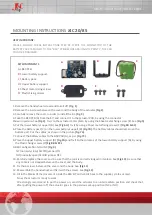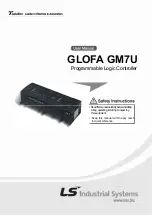
41
TMS320F28069, TMS320F28068, TMS320F28067, TMS320F28066
TMS320F28065, TMS320F28064, TMS320F28063, TMS320F28062
www.ti.com
SPRS698F – NOVEMBER 2010 – REVISED MARCH 2016
Submit Documentation Feedback
Product Folder Links:
TMS320F28069 TMS320F28068 TMS320F28067 TMS320F28066 TMS320F28065
TMS320F28064 TMS320F28063 TMS320F28062
Detailed Description
Copyright © 2010–2016, Texas Instruments Incorporated
6.1.10.3 Peripheral Pins Used by the Bootloader
Table 6-2
shows which GPIO pins are used by each peripheral bootloader. Refer to the GPIO mux table
to see if these conflict with any of the peripherals you would like to use in your application.
Table 6-2. Peripheral Bootload Pins
BOOTLOADER
PERIPHERAL LOADER PINS
SCI
SCIRXDA (GPIO28)
SCITXDA (GPIO29)
Parallel Boot
Data (GPIO31,30,5:0)
28x Control (AIO6)
Host Control (AIO12)
SPI
SPISIMOA (GPIO16)
SPISOMIA (GPIO17)
SPICLKA (GPIO18)
SPISTEA (GPIO19)
I
2
C
SDAA (GPIO32)
SCLA (GPIO33)
CAN
CANRXA (GPIO30)
CANTXA (GPIO31)
6.1.11 Security
The devices support high levels of security to protect the user firmware from being reverse-engineered.
The security features a 128-bit password (hardcoded for 16 wait-states), which the user programs into the
flash. One code security module (CSM) is used to protect the flash/OTP and the L0/L1 SARAM blocks.
The security feature prevents unauthorized users from examining the memory contents through the JTAG
port, executing code from external memory or trying to boot-load some undesirable software that would
export the secure memory contents. To enable access to the secure blocks, the user must write the
correct 128-bit KEY value that matches the value stored in the password locations within the Flash.
In addition to the CSM, the emulation code security logic (ECSL) has been implemented to prevent
unauthorized users from stepping through secure code. Any code or data access to CSM secure memory
while the emulator is connected will trip the ECSL and break the emulation connection. To allow emulation
of secure code, while maintaining the CSM protection against secure memory reads, the user must write
the correct value into the lower 64 bits of the KEY register, which matches the value stored in the lower 64
bits of the password locations within the flash. Note that dummy reads of all 128 bits of the password in
the flash must still be performed. If the lower 64 bits of the password locations are all ones
(unprogrammed), then the KEY value does not need to match.
When initially debugging a device with the password locations in flash programmed (that is, secured), the
CPU will start running and may execute an instruction that performs an access to a protected ECSL area.
If this happens, the ECSL will trip and cause the emulator connection to be cut.
















































